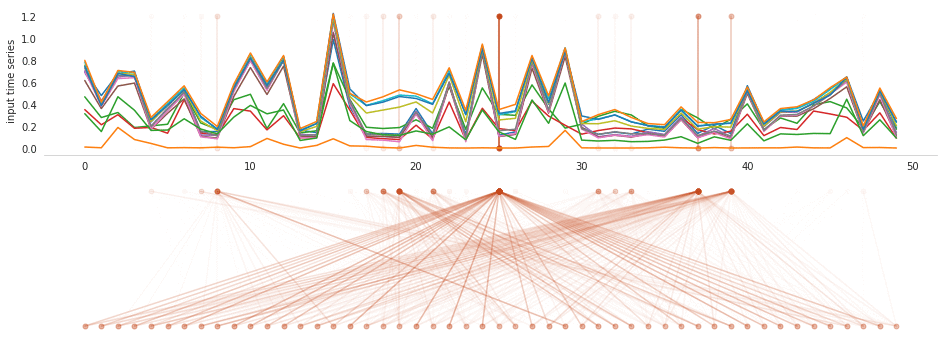Feature extraction through self-attention on Raw Sentinel 2 Time Series

Source Code of Rußwurm & Körner (2019), Self-Attention for Raw Optical Satellite Time Series Classification
@article{russwurm2020,
title = "Self-attention for raw optical Satellite Time Series Classification",
journal = "ISPRS Journal of Photogrammetry and Remote Sensing",
volume = "169",
pages = "421 - 435",
year = "2020",
issn = "0924-2716",
doi = "https://doi.org/10.1016/j.isprsjprs.2020.06.006",
url = "http://www.sciencedirect.com/science/article/pii/S0924271620301647",
author = "Marc Rußwurm and Marco Körner",
}Four deep learning models for time series classification are implemented
- Recurrent Neural Net (LSTM)
src/models/rnn.py - Transformer
src/models/transformerEncoder.py - TempCNN (Pelleter et al., 2019)
src/models/tempcnn.py - Multi-scale ResNet
src/models/msresnet.py
Anaconda environment
conda create -n crop-type-mapping python=3.7.3 pip
conda activate crop-type-mapping
pip install -r requirements.txt
download raw Sentinel 2 crop type label dataset to data/BavarianCrops via
bash download.sh datasetand the pretrained models for hyperparameter tuning and evaluation via
bash download.sh modelsor both with bash download.sh all
Experiments are composed of a set of parameters that define model and datasets. Experiments are defined in the if-else cases
in src/experiments.py and generally follow the naming convention isprs_<model>_<dataset>_<meta>.
start visdom server by running visdom in conda environment and open http://localhost:8097/ in the browser.
train from scratch (23 classes) with hyperparameters defined in ../models/tune/23classes/transformer_tum.csv.
Working directory is src
python train.py --experiment isprs_tum_transformer \
--store /tmp/ \
--classmapping ../data/BavarianCrops/classmapping23.csv \
--hyperparameterfolder ../models/tune/23classesto continue training with 23 classes point --store to an existing model
python train.py --experiment isprs_tum_transformer \
--store ../models/train/23classes/0 \
--classmapping ../data/BavarianCrops/classmapping23.csv \
--hyperparameterfolder ../models/tune/23classesexperiments on raw dataset: isprs_tum_transformer, isprs_tum_msresnet, isprs_tum_tempcnn, isprs_tum_rnn
classmappings: mapping tables to select 12 or 23 classes to classify
hyperparameter folder: folder with results of ray-tune results implemented in tune.py. hyperparameters summarized in csv files for model and dataset, as defined in src/hyperparameters.py
Ray-Tune allows hyperparameter tuning of multiple models in parallel.
Execute in src
python tune.py --experiment transformer_tum \
-g 0.5 -c 2 -b 64 --local_dir ../models/tune --seed 0 \
--classmapping $PWD/../data/BavarianCrops/classmapping23.csv \
--dataroot $PWD/../datato train two models per GPU and store results in ../models/tune.
Valid experiments are [transformer|rnn|msresnet|tempcnn]_[tum|gaf] which are defined in src/hyperparameter.py
- Self-Attention implementation by Yu-Hsiang Huang
https://github.com/jadore801120/attention-is-all-you-need-pytorch
- Multi-scale ResNet implementation by Fei Wang
https://github.com/geekfeiw/Multi-Scale-1D-ResNet
- Original Tensorflow TempCNN implementation by Charlotte Pelletier
